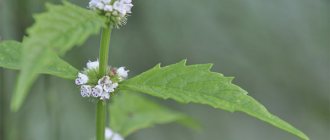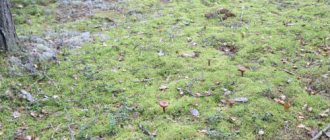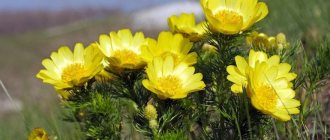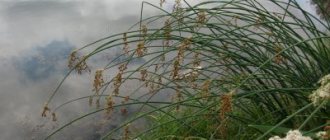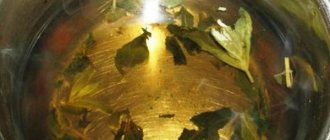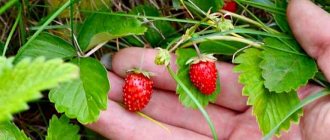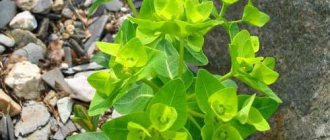Peonies are beautiful spring and summer flowers from the buttercup family (Ranunculaceae), whose bloom reminds high school students of upcoming exams. Like all members of the ranunculaceae family, peonies contain specific chemical compounds, and therefore, obviously, must have medicinal properties. However, the only officially recognized medicinal plants include peony (Paeonia anomala), found in the forest zones of many countries. Maryin root (synonymous with evasive peony) is often grown in garden plots as an ornamental and medicinal plant.
In addition to marina root, other types of peonies are used in folk medicine in various countries, for example, tree peony (Paeonia suffruticosa) and thin-leaved peony (Paeonia tenuifolia), which are also often found in the flower beds of garden lovers. The root of the peony (Paeonia lactiflora) is known to adherents of oriental medicine under the Chinese name Bai Shao. Red or ornamental peony (Paeonia peregrina) is the most common species grown in flower beds, and its roots are also used by traditional healers to treat various ailments.
In ancient times, the peony plant was a symbol of a happy and wonderful life, filled with beauty and bright events. In China, the peony is credited with magical properties; it is the national flower of China; the image of this flower protects against evil spirits. Even the ancient Roman philosopher Pliny the Elder listed diseases that could be cured with the help of the roots of the medicinal peony. You will be convinced that the peony plant and its beneficial properties will bring you good spirits and health.
Useful recipes: dishes, medicinal products and cosmetics made from peonies
The beneficial properties of peonies have been known for a long time and are recognized by official science. In Chinese folk medicine, peonies are used as part of antitumor preparations, in Tibetan - in the treatment of fever and malaria, in Mongolia for healing the liver and kidneys. In Russia, the evasive peony, also known as Maryin root, is used for poisoning and as a sedative.
Maryin root is listed in the Red Book, is an endangered species, grows mainly in Siberia.
In modern cosmetology and pharmacology, decoctions, teas, oils and tinctures are made from peony petals. The observations that were made by traditional healers were completely confirmed by traditional medicine. As a result of modern research, many beneficial properties of peonies have been proven.
The second life of a bouquet of peonies - a fragrant bath
If you were given a bouquet of peonies and you feel sorry for throwing them away, do not wait for the petals to turn yellow and begin to fall off. After the bouquet has been in the water for several days, take a couple of buds that began to fade earlier. Pour boiling water over a handful of still tender, not dried petals. The recommended serving of water is one liter. Next, you need to wait fifteen minutes, strain and pour the infused water into the bath.
Peonies can be brewed with mint, rose petals, and chamomile. These plants can be purchased at the pharmacy. Infuse the peony petals separately according to the above recipe. Mint, roses, chamomile crushed from the pharmacy should be taken in the amount of 2 bags, if you bought bagged herbs or two teaspoons, pour two glasses of boiling water and let it brew for 15 minutes. Then we filter and also pour into the bath along with the peony infusion.
Using peonies for stomach problems
The same remedy from the pharmacy is prescribed for problems of the digestive system: diarrhea, gastrointestinal colic, ulcers, gastritis. Peony tincture activates the release of hydrochloric acid, which has a detrimental effect on harmful bacteria and microorganisms. If you have the time and opportunity, you can try preparing this medicine yourself.
The tincture of peony roots and stems should be brown in color.
Cooking secrets
It is not for nothing that so much attention is paid to brewing technologies; it determines how much the tea will open. So how to brew tea so that it can give away everything healthy, tasty and aromatic?
- It is better to give preference to ceramic or porcelain dishes, but if this is not available, glass can be an alternative.
- When brewing, it is better to use soft water and, of course, clean water.
- In order for the essential oils contained in the leaves to open, you should use water with a temperature of no more than 80-85°C. This does not mean that you need to measure the temperature, you just need to open the lid slightly and let the water cool for 5-6 minutes after boiling.
If you don’t have time to wait for the water to cool down, or you want to speed up the brewing process, then you can use this trick: when you pour water from one container to another, its temperature drops by about 2-3°C.
- Proportions used for brewing: about 4-10 g of leaves are needed per 150 ml of water. You can also find information that tea leaves of this variety can fill up to 1/3 of a Chinese teapot. But it is believed that the true taste of tea can only be experienced through a weak infusion.
- Brewing time is short. Despite its apparent softness, the tea is very strong and if you overdo it, you can get a bitter infusion. Over time, you will find your optimal balance of brew quantity and brew time.
- Real white tea can withstand up to 3-4 steepings. The latter have a more pronounced taste compared to the previous ones.
Bai Mu Dan is great for drinking tea in warm and hot seasons, it cools and quenches thirst. It is not suitable for winter evenings. At this time, it is better to give preference to Da Hong Pao oolong.
In addition to all the advantages, it is believed that Bai Mu Dan has another big advantage. It has no contraindications, which allows absolutely everyone to enjoy the unique taste, rich aroma and receive many benefits for the body. However, if you have problems with the gastrointestinal tract, kidneys and heart, as well as during pregnancy and lactation, you should consult your doctor before using it.
We advise you to read: Da Hong Pao - big red robe tea, the effect of Da Hong Pao
Tea with peony and rosehip petals
You will need: • peony flower petals – 1 teaspoon • rosehip flower petals – 1 tablespoon • 2.5 glasses of water • sugar to taste Flower petals need to be cut and crushed, the resulting mass should be poured into a teapot, after rinsing it with boiling water. Then pour hot water over the petals, close the teapot with a lid and cover with a towel on top. Leave for 10 minutes. After this, the drink can be poured into cups, adding sugar to taste.
Peony and rosehip petal tea
A few words about the benefits of peony for hair
Not only the above-mentioned hydrosol, but also alcohol and oil tinctures can take care of your hair. The mechanism for using them is the same: rub 10 minutes before washing your hair into the root zone of the hair (the product should be slightly heated beforehand) - the curls will become stronger, glow with health and grow much faster, in addition, this is an excellent way to prevent and treat dandruff.
Well, a fresh water infusion or decoction can be used for rinsing after washing - the hair accepts such care with no less gratitude!
Popular cosmetics based on peony:
(click to find out more)
Share
Social Like WordPress
5 salads with bananas
Many tropical fruits are no longer perceived by us as something outlandish. Among these fruits are the beloved bananas, which are sold almost everywhere, have a very affordable price and have long become part of the everyday diet. They are used to prepare the most delicate desserts, fluffy pastries, jamsRead more
Peony petal oil
Peony oil will give the skin of the body and face smoothness and velvety, providing it with a healthy and fresh appearance. It can also be used to eliminate dandruff and will speed up hair growth.
Rinse the peony petals and lightly dry them in a special dryer or in an oven at 50 degrees. You can also use the attic for this. Next, they need to be placed in a glass container and poured with olive oil so that it covers the petals by a little more than one centimeter. This mixture should be stored in the refrigerator in a tightly closed glass container.
Peony tincture - instructions for use
For readers, instructions are provided for the use of the medicinal product for medical use - “Evading Peony Tincture”, verbatim (main calculations), otherwise it is impossible, because these are instructions from the pharmacy -.
International name: peony herb, rhizomes and roots.
Dosage form: tincture.
Active substances:
- rhizomes and roots - 50 grams
- grass - 50 grams
Excipient: Ethanol (ethyl alcohol) 40% - sufficient amount to obtain 1000 ml of the drug.
Description: Transparent liquid of light brown color, with the smell of methyl salicylate. During storage of the tincture, sediment may form.
Pharmacotherapeutic group: Sedative of plant origin.
Pharmacological action: has a sedative effect on the central nervous system.
Indications for use: Used as a sedative for sleep disturbances, increased nervous excitability, and vegetative-vascular disorders.
Contraindications: Hypersensitivity to the components of the drug, liver or kidney failure, children under 12 years of age, pregnancy, breastfeeding.
With caution: liver disease, kidney disease, alcoholism, traumatic brain injury, brain disease, children over 12 years of age.
Directions for use and dosage: Orally for adults and children over 12 years of age, 30-40 drops per dose 3 times a day for 25-30 days. The course of treatment can be repeated after a 10-day break after consultation with a doctor.
Side effects: Allergic reactions are possible.
Overdose: In case of overdose, side effects may increase. Treatment is symptomatic.
Interaction with other drugs: Helps weaken the effect of central nervous system tonics, enhances the effect of sleeping pills, sedatives, and antispasmodics.
Special instructions: The maximum single dose of the drug contains 0.4 grams of absolute alcohol, the maximum daily dose is 1.2 grams of absolute alcohol. During the treatment period, care must be taken when driving vehicles and engaging in other potentially hazardous activities that require increased concentration and speed of psychomotor reactions.
Storage conditions: In a place protected from light at a temperature of 2 to 25 degrees C. Keep out of the reach of children.
Shelf life: 2 years. Do not use after expiration date.
You have become acquainted with a useful plant - peony and its derivatives, which are used in folk medicine to preserve human health.
The peony has faded. I collected its petals for drying and decided to tell you about the peony, not as a flower, but as a very useful plant.
In ancient times, the peony plant was a symbol of a happy and wonderful life, filled with beauty and bright events. In China, the peony is credited with magical properties; it is the national flower of China; the image of this flower protects against evil spirits. The ancient Roman philosopher Pliny the Elder listed diseases that were treated with the roots of the medicinal peony. You will be convinced that the peony plant and its beneficial properties will bring you good spirits and health. At the end of spring, beginning of June, green peony bushes are covered with delightful pink, snow-white and purple flowers. In addition to decorative use, peony is also used in pharmacology, since not only flowers, but also plant roots have medicinal properties. The petals are collected before shedding at the moment of full flowering. They must be dried immediately to preserve color and stored in dark containers without access to light. The roots of this plant are harvested at any time of the year. After digging, peony roots should be dried in rooms with good ventilation, or in the shade under a canopy. The plant contains beneficial properties: alkaloids, as well as tannins, thanks to which peony has anticonvulsant, hemostatic, and anti-inflammatory properties. And it is used in medicine for seizures, epilepsy, gout and spasms. This is a good sedative and pain reliever. Peony roots are used in the treatment of hepatitis, stomach diseases, and diabetes. They are also used for hypertension, nephritis, oncology and gynecological diseases. You can prepare baths for washing
, brew a handful of peony petals, lubricate clean skin with a thin layer of natural honey and bend over the bath for 10 minutes, covering yourself with a terry towel on top, then wash and apply cream.
Peony bath
You can make a relaxing bath using peony tincture and herbal decoctions.
To do this, take 2 teaspoons of herbal teas (rose petals, jasmine, mint leaves, chamomile flowers); in winter, you can use dried and crushed leaves of these plants, purchased at the pharmacy. Take a bowl, pour 2 teaspoons of the indicated components into it, pour them with 0.5 liters of boiling water. Leave the mixture for half an hour, then you need to warm it up a little in a water bath, adding peony tincture and pour it into warm water into the bath, and then sit there yourself. After a while, you will feel the tension go away and your mood improve. You can also add peony essential oil to the bath to thoroughly moisturize the skin and awaken sexual desire in men. Peony oil Peony
oil is prepared very simply, wash the peony petals, dry them and put them in a jar, pour in olive oil to cover 1 cm.
Peony mask
At home, a mask made from dried nettle leaves will help restore the skin's youthful appearance and former elasticity. chamomile and peony tinctures Take 2 tablespoons of herbal infusions, pour boiled warm water until the dried leaves become mushy, heat this mixture in a water bath for half an hour, then mix with peony tincture (2 tablespoons) - the mask is ready.
We apply this mask to the décolleté and face for half an hour, then remove it with a towel or cotton swab and rinse the skin with clean warm water. It is recommended to do this mask 2-3 times a week, and in the summer it is better to use fresh leaves of nettle, chamomile and peony, pouring them boiling water and let it sit for half an hour. Apply to the décolleté and face, rinse after 30 minutes. In the pharmacy
you can find raw materials in the form of roots, which are crushed and prepared as an aqueous infusion of peony; there is also a ready-made preparation - an alcoholic tincture of peony. An alcoholic tincture of peony is a dark liquid with a specific aroma, which is sold in factory-made dark glass bottles. The annotation says that peony tincture has a pronounced sedative effect and promotes sleep, but the effect of peony is much broader. If you take peony tincture in courses, you can note an improvement in mood associated with an increase in the level of endorphins, which is caused by this drug. In addition, tension, fears and obsessive states completely disappear, and the overall quality of life improves. Although peony tincture helps to cure many serious diseases, in some cases it cannot be used. It is contraindicated for pregnant and nursing mothers, people with liver and kidney failure, and children under 12 years of age.
I dried the peony petals.
Peonies: beneficial properties In ancient times, the peony plant was a symbol of a happy and wonderful life, filled with beauty and bright events. In China, the peony is credited with magical properties; it is the national flower of China; the image of this flower protects against evil spirits. Even the ancient Roman philosopher Pliny the Elder listed diseases that could be cured with the help of the roots of the medicinal peony. You will be convinced that the peony plant and its beneficial properties will bring you good spirits and health.
7 358089
Photo gallery: Peony plant and its beneficial properties
In the East, it was believed that only beautiful girls could water peonies; peonies were treated as divine gifts; fairy tales and legends were composed in their honor, poems were composed, and they were embroidered. Peonies came to us under Peter I and began to be grown not only in botanical gardens, but throughout Russia in noble estates.
Peony petals: beneficial properties
At the end of spring, beginning of June, green peony bushes are covered with delightful pink, snow-white and purple flowers. In addition to decorative use, peony is also used in pharmacology, since not only flowers, but also plant roots have medicinal properties. The petals are collected before shedding at the moment of full flowering. They must be dried immediately to preserve color and stored in dark containers without access to light. The roots of this plant are harvested at any time of the year. After digging, peony roots should be dried in rooms with good ventilation, or in the shade under a canopy.
Peony properties
The plant contains beneficial properties: alkaloids, as well as tannins, thanks to which peony has anticonvulsant, hemostatic, and anti-inflammatory properties. And it is used in medicine for seizures, epilepsy, gout and spasms. This is a good sedative and pain reliever. Peony roots are used in the treatment of hepatitis, stomach diseases, and diabetes. They are also used for hypertension, nephritis, oncology and gynecological diseases.
Peony decoction
For irregularities in the menstrual cycle, a decoction of peony roots is used; it is used during breastfeeding to secrete more breast milk. It also helps with spastic colitis, gastritis, stomach ulcers, and to improve appetite.
Peony tincture
Peony tincture is obtained from the Maryin Root plant, which has many uses. Peony is mainly used in the treatment of nervous disorders and vegetative-vascular dystonia, insomnia and headaches. Peony tincture also treats certain cancers and diseases of the reproductive system.
Insomnia
If you have insomnia or a feeling of causeless anxiety or fatigue, drink 3-4 teaspoons of peony tincture before bed every day for 2-3 weeks, and very soon your nervous system will be normal. After completing the course of treatment, take a break for a week, and if after that you still feel nervous tension, undergo treatment again.
The tincture can get rid of some types of gynecological diseases; it is especially helpful in the treatment of cervical tumors and cysts. In such cases, the tincture should be taken with a meal, a teaspoon. Treatment lasts a month, with a mandatory visit to the doctor to check whether improvements have occurred.
When you feel better, you need to take a break for a week and then take the peony tincture again, but keep in mind that serious illnesses cannot be treated with tincture alone; as a rule, the doctor will prescribe additional vitamins or other medications.
Cosmetology
The tincture is also used by cosmetologists for better hair growth and for skin rejuvenation in the manufacture of anti-aging cosmetics. But due to the large amount of alcohol it contains, not everyone is recommended to use the tincture, only if the hair is healthy, since the alcohol tincture strongly warms the scalp, thereby stimulating the work of the hair follicles and helping to normalize the production of sebum.
You can prepare baths for washing, brew a handful of peony petals, lubricate clean skin with a thin layer of natural honey and bend over the bath for 10 minutes, covering yourself with a terry towel on top, then wash and apply cream.
Peony bath
You can make a relaxing bath with peony tincture and herbal decoctions. To do this, take 2 teaspoons of herbal teas (rose petals, jasmine, mint leaves, chamomile flowers); in winter, you can use dried and crushed leaves of these plants, purchased at the pharmacy.
Take a bowl, pour 2 teaspoons of the indicated components into it, pour 0.5 liters of boiling water over them. Leave the mixture for half an hour, then you need to warm it up a little in a water bath, adding peony tincture and pour it into warm water into the bath, and then sit there yourself. After a while, you will feel the tension go away and your mood improve. You can also add peony essential oil to the bath to thoroughly moisturize the skin and awaken sexual desire in men.
Peony oil
Peony oil is prepared very simply, we wash the peony petals, dry them and put them in a jar, pour in olive oil to cover by 1 cm.
Peony petals: application
Peony mask
At home, a mask made from dried nettle leaves, chamomile and peony tincture will help restore the skin’s youthful appearance and former elasticity.
Take 2 tablespoons of herbal mixture, pour boiled warm water until the dried leaves become mushy, heat this mixture in a water bath for half an hour, then mix with peony tincture (2 tablespoons) - the mask is ready. Apply this mask to the décolleté and face for half an hour, then remove it with a towel or cotton swab and rinse the skin with clean warm water.
It is recommended to make this mask 2-3 times a week, and in summer it is better to use fresh leaves of nettle, chamomile and peony, pour boiling water over them and leave for half an hour. Apply to the décolleté and face, rinse after 30 minutes.
Although peony tincture helps to cure many serious diseases, in some cases it cannot be used. It is contraindicated for pregnant and nursing mothers, people with liver and kidney failure, and children under 12 years of age. An allergic reaction may occur to the smell of the tincture or some components.
Grow these wonderful flowers in your garden; they will delight you not only with their aroma and beauty, but also improve your health. Now you know that peony and its properties will be a joy to you.
Eggplant baked in the oven
28.02.2021
Delicious kefir pancakes for the whole family
28.02.2021
Pesto sauce: how to make the famous Italian sauce at home
28.02.2021
Peony wine
First, you should prepare all the necessary ingredients. So, in dry weather it is necessary to cut off the peony buds. You can choose a wide variety of varieties that differ from each other in both shape and color, for example, white, burgundy, pink. It is only worth noting that the variety of colors will have a positive effect on the overall color of your aromatic drink - it will, frankly speaking, be amber and very beautiful. In addition, we can safely say that burgundy petals give the wine richness in its color, but white ones are just necessary for an attractive aroma. In total you need to take about 5-6 pieces of buds of this wonderful flower. Next, you need to separate the petals themselves from the middle of the bud, throw away the latter, and place the petals in a three-liter jar. Now you need to add 10 g of citric acid to this layer, as well as 600-700 g of sugar to taste. Fill it all with cold water so that the liquid level exceeds the number of petals themselves. In any case, you need to leave room in the jar for fermentation. The glass container itself should be tightly closed with a nylon lid.
After 1-1.5 months, you need to get the fermented syrup and strain it well. When this procedure is completed, you should add 0.5 liters of vodka. As a result, you will get a wonderful wine that needs to be bottled and capped. It is recommended to store this drink in a cool place where there is no access to the sun.
Wine from peony petals can turn out pink or red if you use petals from variegated buds
History of Bai Mu Dan tea
The Chinese claim that Bai Mu Dan tea was collected and produced during the Song Dynasty, and some mentions of this drink are found in ancient manuscripts from the Ming Dynasty. World trade in this tea began in the last decade of the 18th century.
The origin of Bai Mu Dan tea is described in Chinese folk legend. It says that during the reign of the great Emperor Yao, there lived a girl whose name was Lan Wu. Her house was located in the gorge of the Taimu Shan mountains. During this period, internecine war reigned and Lan Wu hid in a cave from the strife that was tearing the country apart.
In addition, a measles epidemic was gaining momentum in these places. One night the girl had an extraordinary dream in which she met a wise wizard. According to him, he wandered around the world and, finding himself in the local mountains where a girl lived, dropped an extraordinary tea tree seed, the leaves of which can cure even serious illnesses.
After this, Lan Wu suddenly woke up and ran to look for this tree and found it in the very place that the wizard had described.
The girl picked tea leaves and prepared a decoction, which she hurried to take to the village where people were struck by the disease. The decoction helped the residents. Since then, Lan Wu began growing tea and taught villagers how to care for tea bushes.
The woman began to be respectfully called Mother Taima, which translated means “mother, kind grandmother, nurse.” The method by which Lan Wu prepared tea continued to evolve. It is believed that the famous Fuding white tea was prepared using this method.
This village eventually turned into a rich town, famous throughout the world for its healing tea, and the mountain where Lan Wu lived was nicknamed Taimu-Shan in honor of the savior. The Chinese even found what they believe is the ancestor tree of Bai Mu Dan tea, which is today considered the country's national treasure. A modified method of making Lan Wu dry tea is still used today.
Where does tea grow
White tea Bai Mu Dan (White Peony) grows on plantations in Zhenghe and Fuding counties. The climate of these areas is ideal for growing tea. Sharp changes in night and day temperatures give tea magical properties. Tea leaves are saturated with amino acids while it is hot and sunny in the mountains. At this time, metabolic processes and chemical reactions continuously occur in tea. At night, metabolic processes are suspended, vitamins and microelements are sealed inside the leaf.
This elite tea is made from the leaves of elite tea bushes. The most common variety is the local large white tea Da Bai Cha and Da Hao Cha, which have large fibers. Bai Hao Yin Zhen tea is also produced from these varieties; it is also called Silver Needles. It is made only from shoot buds. The variety got its name due to the appearance of the bud, which resembles a long needle with silvery fibers.
The buds and leaves of Da Bai Cha are sometimes mixed with the leaves and buds of the Shui Xiang (Narcissus) tea bush. The tea turns out very aromatic and tasty. These tea bushes are distinguished by their early growing season. At the end of February, tender buds appear, completely covered with white fluff. The entire bush is covered with white fluff. This reliably protects the bushes from the cold. As soon as the tea leaf emerges from the bud, it is immediately harvested.
We advise you to read: Herbal tea: benefits and harm, medicinal herbs and methods of brewing them
White fluff will not envelop the tea leaves for long, so it is very important not to miss the picking time. Typically, the collection occurs from March 15 and lasts less than a month. Choose sunny weather for collection so that there is no fog.
The tea is made from the bud and two leaves that remain from high-grade Bai Hao Yin Zhen tea. Even though White Peony tea is a medium-sized tea, it is very important to preserve the white hair on the bud and raw material. Do not use purple buds, as well as buds that are too short or too long. Buds damaged by insects or wind are not suitable.
Tea plantation in Fujian Province
Peony jam
It is also worth picking 2-3 peony buds in dry weather and clearing them from the middle of the petals. They need to be washed well under running water and placed in a pan. Fill everything with cold boiled water, then you need to bring the contents to a boil. After this, it is worth reducing the heat to a minimum, adding 0.5 kg of sugar, thoroughly stirring all the contents. Add the juice of 0.5 lemon to this flower material at the very end of cooking.
As a result, you will receive aromatic peony jam, which is worth using for viral diseases, flu and sore throat.
Peony jam is a very beautiful and unusual treat for tea
How to use peony for these purposes?
You can use any image of red peonies to improve your personal life - painting, poster, drawing. But it is best to place fresh peonies in the bedroom. At the same time, it is important to know that peonies, awakening passion in people, can also provoke betrayal. Therefore, as soon as you establish romantic connections, it is better to move peonies from the bedroom to the living room.
If quarrels often occur in your family and it seems to you that household members have ceased to understand each other, then white peonies will help you. They can be placed in the dining room or in the room where the family often gathers. White peonies will create a peaceful, friendly environment.
Useful qualities
If we talk about the benefits of white tea, namely Bai Mu Dan, you can understand how valuable it is. The very first thing a person can get from this tea is a feeling of comfort and calm. Theanine present in tea has a calming effect, can relieve emotional stress and helps to find balance in stressful situations.
In addition, White Peony has tonic and restorative properties. It contains vitamins, microelements, macroelements, amino acids and pectins. Due to its rich composition, it is able to increase blood clotting and promote wound healing.
Moreover, this drink contains a very small percentage of caffeine, which makes it even more versatile. This tea strengthens the human immune system, helps cleanse the body of harmful substances, and helps normalize the functioning of the cardiovascular system.
Drinking the drink slows down the aging process and improves complexion. It is indispensable in the fight against excess weight, and is also a good preventative against caries and a barrier to the development of microbes.
When all the qualitative characteristics of White Peony tea are known, it becomes clear why it is called the elixir of immortality. Few drinks can bring so many benefits.
All these properties are available due to the fact that the White Peony tea leaves do not undergo any processing, and the drink provides all the healing properties that nature gives it in full.
Indications and contraindications
Preparations made from peony are recommended as a sedative, anticonvulsant, hemostatic, analgesic, bactericidal, anti-inflammatory, tonic and antitumor agent.
But treatment with peonies may also have undesirable effects associated with individual intolerance and overdose. For this reason, it is not recommended for pregnant women and children under 12 years of age. Peonies should not be used during breastfeeding or while driving a car. As a strong sedative, peony can cause absent-mindedness, as well as a decrease in blood pressure.
When preparing medicines, it is important not to confuse peony evasive with other varieties of peonies. It must be remembered that Maryin root is a toxic plant, so it must be handled very carefully.
Taste characteristics
Visually, Bai Mudan has nothing in common with traditional Chinese teas. Two thirds of it are neat and small tea leaves. The remaining third comes from buds that have not yet bloomed. After careful processing, the leaves become brown with a slight black tint, while the bud does not change in any way.
The peculiarities of collecting White Peony determine its taste characteristics: the leaves imbue the drink with a unique aroma, complemented by the taste of an unripe bud. The components are filigree intertwined with each other, forming an unsurpassed mystical taste of exceptional quality white tea.
After brewing, Bai Mudan acquires a pleasant and slightly sweet aroma. It cannot be confused with any other. Tenderness and fruity notes can charge the body with vigor and vitality. Slowly enjoying the drink with your eyes closed, you can understand that there is a place for birch sap, caramel sweetness, pine needles, tartness and freshness of the thawed mill.
We advise you to read: Diuretic tea for edema: 9 recipes, herbal preparations from the pharmacy
Characteristics of White Tea
Taste. Bai Mu Dan has a soft, refined taste with a bright peach flavor. Although the tea looks like a regular green variety, its aroma is not green, it is honey-like, fragrant, filled with notes of flowers and fruits. You can enjoy this tea and feel a pleasant sweet aftertaste with every sip.
Color. The color of the drink varies from almond yellow to rich yellow. It all depends on the degree of fermentation. When preparing tea, the green leaves unfurl. They resemble a white peony flower, which is why they call it that.
Effect. The characteristics of white tea make it possible to talk about it as the tea of intellectuals and aristocrats. According to Chinese scientists, the drink improves the emotional state, creates a feeling of pleasant lightness, pleasant comfort and peace. It can relax and tone at the same time, remove intense heat. It is perfect for the hot season. Drinking a tea drink will help rejuvenate the body and cleanse it. It should not be combined with food, it should be enjoyed so that nothing clogs the taste.

